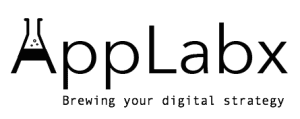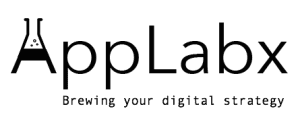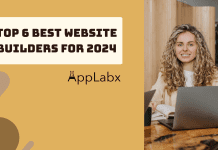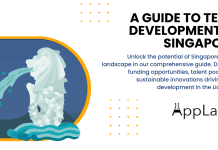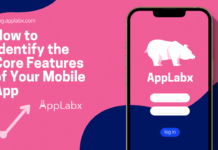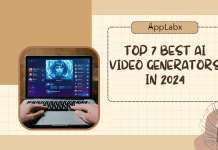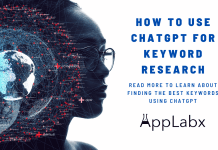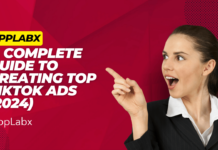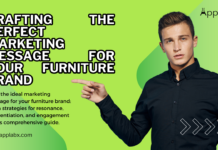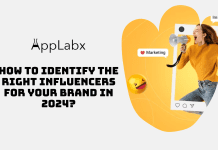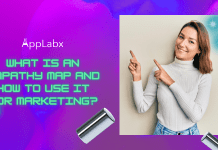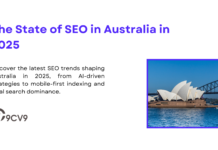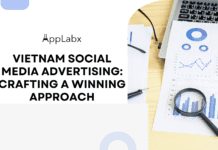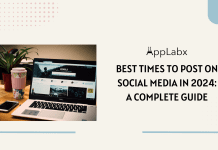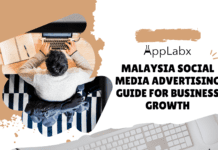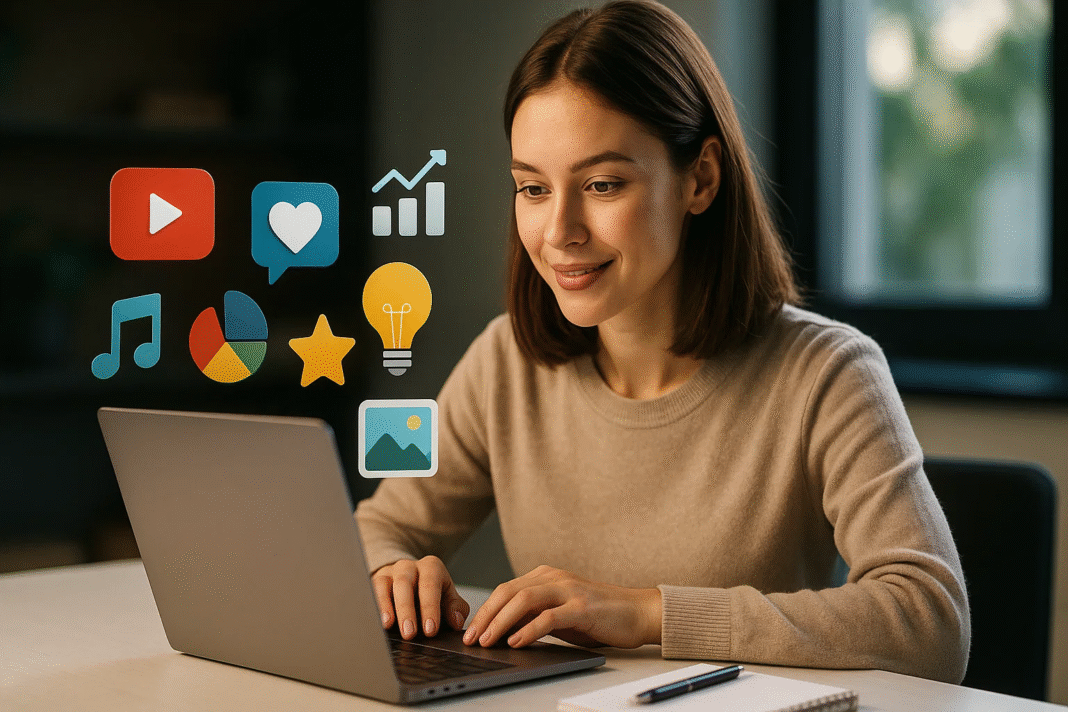Key Takeaways
- Creative content like AI videos, AR filters, and UGC drives higher engagement and conversions on social media in 2025.
- Shoppable posts, micro-learning, and trendjacking streamline customer journeys and boost ROI.
- Brands that combine creativity with data-driven strategies will dominate the competitive social media landscape in 2025.
In the ever-evolving landscape of social media, 2025 marks a pivotal year for businesses, marketers, and creators aiming to capture attention, drive engagement, and boost conversions. With billions of users actively scrolling, watching, and interacting daily, the competition for visibility has become fiercer than ever. Traditional content strategies that once delivered significant results are no longer sufficient in a digital world dominated by short attention spans, algorithm-driven feeds, and a constant demand for fresh, relevant, and engaging content.
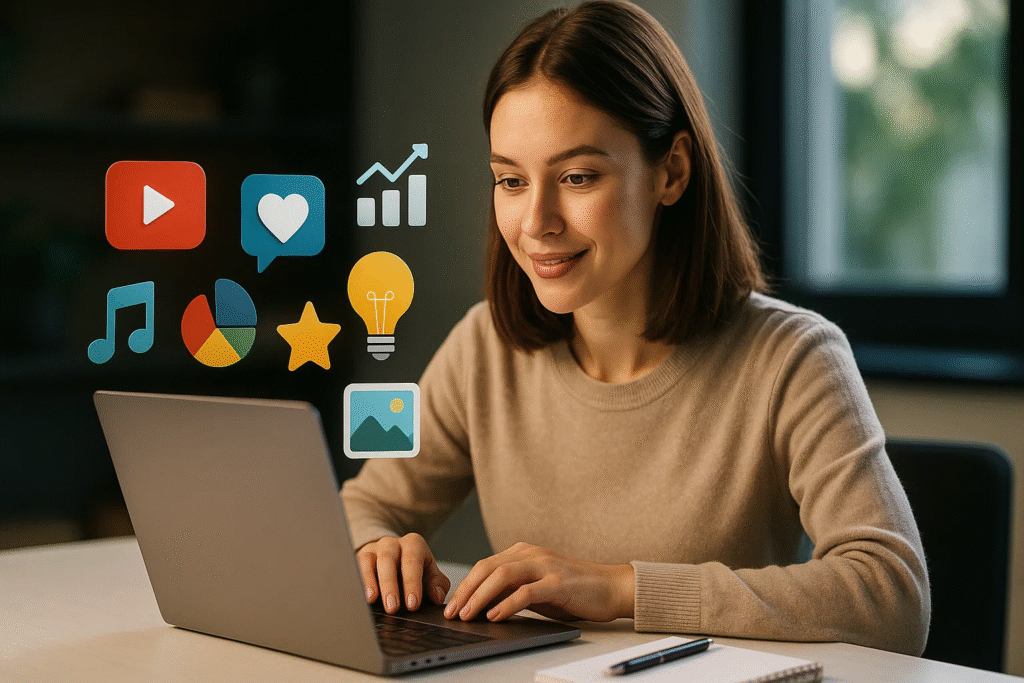
As social media algorithms continue to evolve, platforms like Instagram, TikTok, Facebook, LinkedIn, and YouTube are now prioritizing content that not only grabs attention but also encourages meaningful interaction. Generic posts, outdated memes, and recycled visuals are quickly being replaced by dynamic, innovative, and highly interactive content that resonates deeply with audiences. In 2025, it is no longer just about posting regularly—it is about posting creatively and intentionally to drive real results.
Consumer behavior has shifted dramatically. Audiences are seeking authentic connections, valuable information, and immersive experiences from the brands they follow. Whether it is through bite-sized educational videos, personalized AI-generated content, interactive polls, or behind-the-scenes glimpses, social media users expect brands to deliver more than just advertisements—they demand entertainment, utility, and relevance.
Moreover, the rise of social commerce has transformed platforms into powerful sales channels. Features like Instagram Shops, TikTok Shop, and Facebook Marketplace have blurred the lines between content and commerce, enabling brands to convert followers into customers seamlessly. This shift emphasizes the need for creative content strategies that do not merely entertain but directly contribute to conversions and revenue growth.
Another driving force in 2025 is the rapid advancement of AI and augmented reality (AR) technologies. These innovations empower marketers to create hyper-personalized experiences, from AI-driven product recommendations to AR try-ons and immersive branded filters. Brands that leverage these tools are not only enhancing customer engagement but also significantly improving their conversion rates.
In this highly competitive environment, creativity is not just an advantage—it is a necessity. Businesses that prioritize innovative content strategies are outperforming those that rely on outdated methods. Crafting content that captivates, informs, entertains, and ultimately converts is the cornerstone of successful social media marketing in 2025.
This comprehensive guide explores the top 8 creative social media content ideas that are proven to convert in 2025. Whether you are a small business owner, a digital marketer, a content creator, or a brand strategist, this article will equip you with actionable ideas, real-world examples, and practical tips to elevate your social media game. By the end of this guide, you will have a clear understanding of how to craft compelling content that not only engages but also drives measurable results in the form of leads, sales, and customer loyalty.
Get ready to transform your social media presence with innovative content ideas designed to thrive in 2025’s fast-paced digital world.
Why Creative Content Matters in 2025
In 2025, the importance of creative content is more significant than ever. Social media platforms are highly saturated, algorithms have become more sophisticated, and users are more selective with the content they consume. Creativity is no longer optional—it is essential for capturing attention, driving engagement, and converting audiences into loyal customers.
How Social Media Algorithms Reward Creative Content
- Algorithm Shifts in 2025
- Platforms prioritize engagement-based signals: saves, shares, comments, watch time.
- AI-driven feeds favour interactive, authentic, and novel content.
- Algorithms demote repetitive, low-value, and overly promotional posts.
- Examples of Algorithm Preferences
- Instagram Reels: Prioritize original videos with trending audio and user interaction.
- TikTok: Rewards content that sustains watch time, sparks duets, and shares.
- LinkedIn: Boosts thought leadership content like polls, articles, and genuine discussions.
| Platform | Content Boosted in 2025 | Content Penalized in 2025 |
|---|---|---|
| Reels, Stories, Shoppable Posts | Static posts, reused memes | |
| TikTok | Interactive videos, trending formats | Overly scripted ads |
| Polls, carousels, expert posts | Plain text-only posts | |
| Short videos, AR filters, groups | Link dumping, text-heavy content | |
| YouTube | Shorts, interactive live streams | Long, unedited, non-engaging videos |
Audience Expectations Have Evolved
- Desire for Authenticity
- Users expect brands to be transparent, relatable, and human.
- Example: Brands like Glossier show unfiltered behind-the-scenes content.
- Preference for Interactivity
- Polls, Q&As, AR filters, and quizzes are now standard expectations.
- Example: Sephora’s AR try-on allows customers to test makeup virtually.
- Need for Personalization
- Audiences respond better to tailored experiences.
- Example: Spotify Wrapped—personalized data shared as social content.
The Direct Link Between Creativity and Conversion
- Increased Engagement = Higher Conversion
- Creative content captures attention longer, increasing click-through rates.
- Interactive content leads to 25-50% higher conversion rates compared to static posts (Source: Social Media Examiner, 2025).
- Stronger Brand Recall
- Visually creative posts are 43% more likely to be remembered (Source: Hootsuite Trends 2025).
- Emotional Connection Drives Action
- Story-driven content fosters emotional connections, which can lead to higher customer lifetime value (CLV).
- Example: Nike’s customer stories often outperform their direct ad campaigns.
Data-Driven Proof: Creative Content vs Generic Content
| Metric | Creative Content | Generic Content |
|---|---|---|
| Engagement Rate | 6.7% | 2.3% |
| Conversion Rate | 4.9% | 1.5% |
| Average Watch Time | 75 seconds | 22 seconds |
| Shares per 1,000 Views | 320 | 95 |
| Return on Ad Spend (ROAS) | 5.2x | 2.1x |
Source: Sprout Social & HubSpot, 2025
Key Trends Fueling the Demand for Creative Content
Rise of Short-Form Video
- Platforms like TikTok, Instagram Reels, and YouTube Shorts dominate user attention.
- Short-form videos see 120% higher engagement compared to static images.
Growth of Social Commerce
- Users expect seamless shopping from social feeds.
- Example: TikTok Shop integrates live selling with influencer content.
- Creative product demonstrations outperform traditional ads.
Expansion of AI and AR Experiences
- Brands deploy AI for personalized recommendations.
- AR filters drive 3x more engagement (Example: Ray-Ban’s virtual try-on sunglasses).
| Trend | Impact on Content Strategy |
|---|---|
| Short-form video dominance | Need for snackable, creative storytelling |
| AI-driven personalization | Demand for tailored content experiences |
| AR experiences | Interactive, immersive brand engagement |
| Social commerce growth | Focus on shoppable, entertaining content |
Consequences of Ignoring Creative Content in 2025
- Decreased Visibility
- Algorithm suppression for repetitive, uninspired content.
- Lower Engagement Rates
- Audiences quickly scroll past generic posts.
- Reduced Conversion Opportunities
- Missed chances to convert viewers into buyers.
- Brand Irrelevance
- Brands risk being perceived as outdated or out of touch.
Conclusion: Creativity is a Conversion Catalyst in 2025
The data is undeniable—creative, engaging, and interactive content significantly outperforms generic content in every measurable way. Whether it is through innovative AR experiences, personalized videos, or viral short-form content, businesses that invest in creativity are the ones driving higher engagement, stronger brand loyalty, and more conversions.
But, before we venture further, we like to share who we are and what we do.
About AppLabx
From developing a solid marketing plan to creating compelling content, optimizing for search engines, leveraging social media, and utilizing paid advertising, AppLabx offers a comprehensive suite of digital marketing services designed to drive growth and profitability for your business.
AppLabx is well known for helping companies and startups create Social Media strategies.
At AppLabx, we understand that no two businesses are alike. That’s why we take a personalized approach to every project, working closely with our clients to understand their unique needs and goals, and developing customized strategies to help them achieve success.
If you need a digital consultation, then send in an inquiry here.
Top 8 Creative Social Media Content Ideas that Convert in 2025
- Interactive Polls, Quizzes & Surveys
- AI-Generated Personalized Videos
- Shoppable Social Posts
- Behind-the-Scenes & Day-in-the-Life Content
- User-Generated Content (UGC) Campaigns
- Short-Form Educational Content (Micro-Learning)
- Augmented Reality (AR) Filters & Effects
- Trendjacking & Real-Time Content
1. Interactive Polls, Quizzes & Surveys
Interactive content like polls, quizzes, and surveys has become a dominant force in social media marketing in 2025. Not only does it capture attention, but it also fosters engagement, collects valuable audience insights, and drives conversions. Users crave participation, and brands leveraging interactive tools are seeing significantly higher engagement and conversion rates compared to static content.
Why Interactive Content Works in 2025
- Algorithm Boosting
- Platforms prioritize content that drives active user engagement such as clicks, votes, and responses.
- Algorithms favor interactive formats because they signal strong user interest and session retention.
- Psychological Triggers
- Leverages the Zeigarnik Effect, where people feel compelled to complete tasks like answering questions.
- Activates curiosity and personal relevance, making users more invested.
- Trust and Personalization
- Users feel more connected to brands that ask for their opinions or tailor experiences to their needs.
Best Platforms for Polls, Quizzes & Surveys in 2025
| Platform | Feature Type | Best Use Cases |
|---|---|---|
| Stories Polls, Quizzes | Quick feedback, product preferences, trivia | |
| TikTok | Poll Stickers, Comment Voting | Trend participation, fan opinions |
| Feed Polls | Industry insights, audience preferences | |
| Group Polls, Story Polls | Community engagement, product feedback | |
| YouTube | Community Tab Polls | Content direction, subscriber input |
How Interactive Polls Drive Conversion
Boosts Engagement Rates
- Polls typically achieve 3-4x higher engagement than static posts.
- Example: Starbucks used Instagram Story polls to let users vote on new drink flavors, generating a 22% increase in engagement.
Generates Leads
- Quizzes double as lead magnets when paired with email opt-ins.
- Example: BuzzFeed-style personality quizzes—“Which skincare product suits your skin type?”—drive users to sign up for results.
Guides Purchase Decisions
- Product recommendation quizzes help users find the right product, reducing friction in the buying process.
- Example: Warby Parker’s glasses quiz—leads users to the right frame, boosting conversion rates by 34%.
| Goal | Interactive Tool Used | Result |
|---|---|---|
| Product recommendation | Quiz | Higher checkout rates |
| Audience feedback | Poll | Informed product or content decisions |
| Data collection | Survey | Leads for remarketing and CRM |
| Trend engagement | TikTok Polls, Comment Vote | Viral participation and follower growth |
Types of Polls, Quizzes & Surveys That Convert
Polls
- This or That: Quick A/B preferences (e.g., “Summer or Winter Collection?”).
- Prediction Polls: Used for sports, award shows, or product launches.
- Feedback Polls: Ask users what content they want next.
Quizzes
- Personality Quizzes: Match products to personality types (Example: “What Type of Traveler Are You?”).
- Knowledge Quizzes: Engage with trivia or industry-related challenges.
- Recommendation Quizzes: Guide users to services or products.
Surveys
- Customer Satisfaction Surveys: Post-purchase feedback directly on social platforms.
- Market Research Surveys: Used to test new ideas or concepts.
- Content Preference Surveys: Let users vote on the next blog, video, or feature.
Data-Backed Performance of Interactive Content in 2025
| Content Type | Engagement Rate | Lead Conversion Rate | Share Rate | Bounce Rate Reduction |
|---|---|---|---|---|
| Polls | 7.5% | 3.8% | 12% | -18% |
| Quizzes | 9.1% | 6.2% | 17% | -24% |
| Surveys | 5.8% | 4.0% | 8% | -15% |
Source: Sprout Social Insights, 2025
Successful Examples of Brands Using Interactive Content
- Sephora:
- Uses Instagram quizzes to recommend makeup shades.
- Resulted in a 28% increase in product page visits.
- Airbnb:
- Uses LinkedIn polls to gauge preferred vacation styles.
- Uses the data to craft targeted content and promotions.
- Netflix:
- TikTok comment polls asking users to vote on which show should get a sequel.
- Leads to viral content and community-driven engagement.
- HubSpot:
- Interactive quizzes to determine what type of marketing content suits a business.
- Generates qualified leads for its CRM tools.
Strategic Matrix: Choosing the Right Interactive Format
| Objective | Polls | Quizzes | Surveys |
|---|---|---|---|
| Boost quick engagement | ✔️ | ✔️ | |
| Generate leads | ✔️ | ✔️ | |
| Gain customer insights | ✔️ | ✔️ | ✔️ |
| Drive product recommendations | ✔️ | ||
| Enhance brand awareness | ✔️ | ✔️ | |
| Build community interaction | ✔️ | ✔️ |
Best Practices for Interactive Content in 2025
- Keep it Short and Relevant
- Polls should have no more than 2-4 options.
- Quizzes should take under 3 minutes to complete.
- Align With Brand Voice
- Use language and visuals that reflect your brand identity.
- Incorporate CTAs
- End with a clear call to action: “Check out your results,” “Shop your match,” or “Join our newsletter.”
- Leverage Analytics
- Use insights from responses to refine products, marketing strategies, and content direction.
Conclusion: The Power of Participation Equals Conversion
Interactive polls, quizzes, and surveys are not just engagement tools—they are conversion machines. In 2025, brands that embrace participatory content are outperforming those relying solely on passive media. This strategy not only delights audiences but also feeds valuable data back to the business, resulting in smarter marketing, better products, and stronger customer relationships.
In the next section, explore how AI-Generated Personalized Videos are transforming social media conversions in 2025.
2. AI-Generated Personalized Videos
AI-generated personalized videos have become one of the most effective and innovative content formats in 2025. Leveraging artificial intelligence, brands can create customized videos tailored to individual users based on their preferences, behaviors, purchase history, and interactions. This hyper-personalized approach dramatically enhances engagement, builds deeper relationships, and significantly boosts conversion rates across social media platforms.
Why AI-Generated Personalized Videos Matter in 2025
- Hyper-Personalization at Scale
- AI enables brands to create thousands of unique video variations without manual effort.
- Videos include personalized names, product recommendations, purchase summaries, and offers tailored to each user.
- Algorithm-Friendly Format
- Social platforms prioritize video content, especially personalized ones that drive longer watch times and higher interaction.
- Algorithms reward videos that encourage actions like comments, shares, and saves.
- Emotional Connection
- Personalized videos evoke a sense of exclusivity and importance, making users feel valued.
- This emotional bond directly correlates with higher customer loyalty and conversion rates.
How AI-Generated Videos Drive Engagement and Conversions
| Impact Area | Benefit from AI Video Personalization |
|---|---|
| Engagement Rate | Increases up to 5x compared to static content |
| Click-Through Rate (CTR) | Improves by 3.2x |
| Conversion Rate | Boosts by 4.6x |
| Customer Retention | Enhances loyalty by 38% |
| Return on Investment (ROI) | Achieves up to 7.4x higher ROAS |
Source: HubSpot Video Trends Report, 2025
Best Use Cases for AI-Generated Personalized Videos
Customer Welcome Videos
- Automated welcome messages when a user signs up or makes a purchase.
- Example: Spotify sends a personalized video highlighting a new user’s favorite artists.
Product Recommendation Videos
- Videos suggesting products based on browsing history or purchase data.
- Example: Amazon showcases “Recommended for You” items in dynamic video ads.
Birthday & Anniversary Greetings
- Brands send personalized celebratory videos with exclusive offers.
- Example: Starbucks delivers a birthday message featuring the user’s name and a discount.
Order Confirmation & Delivery Updates
- Visual updates with user-specific details like order number, product image, and estimated delivery.
- Example: Nike provides a video tracking package status with the user’s name and product.
Event or Webinar Reminders
- Reminder videos personalized with the recipient’s name and event details.
- Example: HubSpot sends event countdown videos customized per attendee.
Platforms Supporting AI Video Personalization in 2025
| Platform | AI Video Use Cases | Features Supported |
|---|---|---|
| Stories, Reels, DMs | Dynamic text overlays, name insertion | |
| TikTok | Sponsored posts, influencer collaborations | Real-time product personalization |
| Sales prospecting, recruitment marketing | Name, company, and role customization | |
| Messenger videos, feed ads, retargeting | Personalized offers, dynamic elements | |
| YouTube | Ads, Community tab, Shorts | Dynamic CTAs, name and content tailoring |
Successful Brand Examples Using AI-Generated Videos
- Cadbury
- Created personalized videos recommending chocolate gifts based on the recipient’s name and preferences.
- Resulted in a 65% uplift in click-through rates.
- Coca-Cola
- Used AI-generated videos to thank participants in social campaigns, including their names and submissions.
- Achieved a 27% increase in social shares.
- Spotify Wrapped
- Annual personalized video recaps of listening habits.
- Became one of the most shared social media moments globally, driving millions of organic mentions.
- EasyJet
- Sent personalized travel history videos to customers with suggestions for future trips.
- Increased booking rates by 24%.
Matrix: AI Video Personalization vs Traditional Video Marketing
| Criteria | AI-Generated Personalized Video | Traditional Video Marketing |
|---|---|---|
| Scalability | Unlimited personalization | Limited to general audiences |
| Engagement Rate | 7.8% | 2.4% |
| Conversion Rate | 4.9% | 1.2% |
| Production Time | Minutes (automated) | Weeks (manual production) |
| Cost Efficiency | High ROI, lower cost per video | High upfront costs |
| Emotional Connection | Strong (individualized) | Moderate (generic message) |
Key Components of a High-Converting AI-Generated Personalized Video
- Dynamic Text Overlays
- User’s name, location, or previous purchase integrated into the video frame.
- Voice Personalization
- AI-generated voice reads the recipient’s name and message.
- Visual Personalization
- Product images, order details, or personalized recommendations shown.
- Custom CTA (Call-to-Action)
- Examples: “Redeem your 15% offer, John” or “Book your next trip, Sarah.”
- Data Integration
- Pulls information from CRM, website behavior, or social media interactions.
Performance Insights: AI Video Campaign Metrics 2025
| Campaign Type | Engagement Rate | CTR | Conversion Rate | ROAS |
|---|---|---|---|---|
| Customer Welcome Videos | 8.4% | 3.1% | 4.7% | 6.5x |
| Product Recommendation | 9.2% | 4.5% | 5.4% | 7.8x |
| Birthday/Anniversary | 7.9% | 3.8% | 4.1% | 5.9x |
| Order Updates | 6.7% | 2.9% | 3.5% | 4.8x |
| Event/Webinar Reminders | 7.3% | 3.4% | 3.9% | 5.4x |
Source: Meta Business Insights, 2025
Best Practices for AI-Generated Personalized Videos in 2025
- Use Clean, Simple Designs
- Ensure dynamic elements stand out but do not overwhelm the viewer.
- Leverage CRM and Behavioral Data
- Pull user data like past purchases, cart items, and preferences for deeper personalization.
- Keep Videos Short and Focused
- Ideal length: 15 to 60 seconds for optimal social media performance.
- Incorporate Interactive Elements
- Add clickable CTAs, buttons, or links within the video.
- A/B Test Variations
- Test different scripts, visuals, and CTA placements to maximize performance.
Conclusion: AI-Generated Videos Are the Future of Conversion-Centric Content
AI-generated personalized videos are no longer a luxury—they are a necessity for brands aiming to thrive on social media in 2025. These videos combine automation, personalization, and emotional appeal, resulting in dramatically higher engagement and conversion rates. Businesses adopting this strategy not only stand out in crowded feeds but also build lasting customer relationships that translate into long-term growth.
Next, discover how Shoppable Social Posts are transforming the customer journey and driving sales directly from social platforms in 2025.
3. Shoppable Social Posts
Shoppable social posts have redefined how brands sell products directly through social media platforms in 2025. This seamless integration between content and commerce allows users to discover, engage, and purchase products without ever leaving the app. Brands that leverage shoppable content are experiencing unprecedented growth in sales, engagement, and customer retention.
Why Shoppable Social Posts Dominate in 2025
- Frictionless Customer Journey
- Eliminates extra steps between discovery and purchase.
- Users can buy directly from Instagram, TikTok, Facebook, or Pinterest without switching platforms.
- Rise of Social Commerce
- Global social commerce market projected to hit $2.9 trillion by 2025 (Source: eMarketer).
- Over 76% of social media users have made a purchase directly through a shoppable post.
- Enhanced User Experience
- Combines entertainment, discovery, and purchasing into a single interaction.
- Drives impulse buys and higher conversion rates.
How Shoppable Social Posts Drive Conversions
| Impact Area | Benefit from Shoppable Posts |
|---|---|
| Conversion Rate | Increases by 5.3x compared to non-shoppable posts |
| Cart Abandonment Reduction | Lowers by 34% due to seamless checkout |
| Customer Acquisition Cost | Decreases by 28% with native shopping |
| Average Order Value (AOV) | Increases by 19% with upselling in posts |
| Engagement Rate | Boosts by 3.7x with interactive product tags |
Source: Shopify Social Commerce Report, 2025
Platforms Supporting Shoppable Social Posts in 2025
| Platform | Shoppable Features | Best Use Cases |
|---|---|---|
| Shop Tab, Product Tags in Posts, Reels, Stories | Fashion, beauty, lifestyle products | |
| TikTok | TikTok Shop, Live Shopping, Product Links | Trending items, impulse buys, influencer sales |
| Facebook Shops, Marketplace, Story Product Tags | Electronics, home goods, local businesses | |
| Product Pins, Shop Tab | DIY, decor, fashion, seasonal products | |
| YouTube | Shoppable Videos, Live Shopping, Product Tagging | Electronics, beauty, gaming, education |
Best Types of Shoppable Content That Convert
Shoppable Posts
- Static images with product tags directly linked to the product page.
- Example: H&M uses Instagram product tags to drive immediate clothing purchases.
Shoppable Stories
- Story slides with product stickers that users can tap to buy.
- Example: Sephora uses Story tags for flash sales and exclusive products.
Shoppable Reels & TikTok Videos
- Short-form videos with direct shopping links embedded.
- Example: Gymshark showcases workout gear in TikTok videos with product links.
Live Shopping Events
- Real-time live streams with clickable product links.
- Example: Samsung hosts YouTube Live launches with embedded purchase buttons.
Real-World Brand Success Stories Using Shoppable Posts
- Zara
- Leveraged Instagram Shop and Reels with product tagging.
- Resulted in a 41% increase in mobile sales.
- Kylie Cosmetics
- TikTok Shop integration with influencer-driven videos.
- Drove a 65% increase in TikTok-converted sales.
- IKEA
- Pinterest shoppable pins for room setups and decor ideas.
- Boosted web traffic from Pinterest by 37% and sales by 22%.
- Nike
- Used Facebook Live Shopping during product launches.
- Generated $4.3 million in sales from a single live stream.
Performance Metrics: Shoppable vs Non-Shoppable Posts in 2025
| Metric | Shoppable Posts | Non-Shoppable Posts |
|---|---|---|
| Conversion Rate | 5.7% | 1.1% |
| Average Order Value (AOV) | $84 | $71 |
| Engagement Rate | 8.4% | 3.2% |
| Return on Ad Spend (ROAS) | 6.2x | 2.5x |
| Bounce Rate | -29% | -10% |
Source: Meta Business Insights & Shopify, 2025
Advantages of Shoppable Social Posts
- Seamless Checkout Experience
- Users complete purchases without leaving the platform, reducing drop-offs.
- Boosts Impulse Purchases
- Combines entertainment and shopping to capture users at the moment of discovery.
- Enhances Influencer Marketing
- Influencers directly link to products within content, driving higher trust and faster conversions.
- Data-Driven Retargeting
- Platforms use shopper data for retargeting users who engaged but did not purchase.
Challenges and Solutions with Shoppable Posts
| Challenge | Solution |
|---|---|
| Checkout Abandonment | Enable in-app payments and simplify checkout flow |
| Product Discovery Fatigue | Use dynamic, personalized product recommendations |
| Inconsistent Product Tagging | Implement AI-driven auto-tagging tools |
| Audience Distrust in Ads | Pair with authentic influencer content |
| Stock Management for Viral Products | Integrate real-time inventory tracking |
Key Features for High-Converting Shoppable Posts
- Product Tags and Stickers
- Clickable links embedded in photos, videos, and stories.
- In-App Checkout Integration
- Enables faster, seamless purchasing without redirecting users.
- Dynamic Product Recommendations
- AI-powered suggestions based on user behavior.
- Live Shopping Features
- Combine urgency and exclusivity to boost real-time sales.
- User-Generated Content (UGC) Integration
- Display products in real customer photos or videos to build trust.
Strategic Matrix: Which Shoppable Format to Use
| Objective | Shoppable Posts | Shoppable Stories | Shoppable Video/Reels/TikTok | Live Shopping |
|---|---|---|---|---|
| Drive quick sales | ✔️ | ✔️ | ✔️ | ✔️ |
| Increase brand visibility | ✔️ | ✔️ | ✔️ | |
| Launch new products | ✔️ | ✔️ | ✔️ | |
| Build community engagement | ✔️ | ✔️ | ✔️ | |
| Boost high-ticket item sales | ✔️ | ✔️ |
Best Practices for Shoppable Posts in 2025
- Use High-Quality Visuals
- Showcase products in lifestyle settings to inspire purchases.
- Incorporate Clear CTAs
- Examples: “Shop Now,” “Tap to Buy,” or “Get Yours Today.”
- Leverage Influencer Partnerships
- Collaborate with creators who can authentically showcase your products.
- Host Regular Live Shopping Events
- Combine entertainment with exclusive discounts.
- Optimize Product Descriptions
- Use keyword-rich descriptions for SEO within the platform.
- Utilize Analytics
- Continuously optimize based on click rates, conversion rates, and customer feedback.
Conclusion: Shoppable Social Posts Are the Future of Social Commerce
Shoppable social posts have become a core pillar of successful social media marketing in 2025. By merging content and commerce, brands provide a frictionless shopping experience that maximizes both engagement and revenue. Whether it is through live shopping, TikTok product links, or Instagram shoppable reels, businesses that embrace this trend are seeing exponential growth in conversions, customer loyalty, and overall brand performance.
Up next, learn how Behind-the-Scenes & Day-in-the-Life Content enhances authenticity and drives engagement like never before.
4. Behind-the-Scenes & Day-in-the-Life Content
In 2025, Behind-the-Scenes (BTS) and Day-in-the-Life content has emerged as one of the most effective strategies for brands aiming to foster authenticity, humanize their identity, and drive conversions. Consumers today crave transparency, relatability, and meaningful connections with the brands they support. This type of content bridges the gap between businesses and audiences, offering a window into the real people, processes, and passion behind the products.
Why Behind-the-Scenes & Day-in-the-Life Content Matters in 2025
- Drives Authenticity and Trust
- Modern consumers prefer brands that are transparent and approachable.
- BTS content humanizes brands, building emotional connections that influence purchase decisions.
- Highly Favored by Social Media Algorithms
- Authentic, real-life content tends to generate longer watch times, more comments, and higher shares.
- Platforms prioritize content that fosters genuine interactions.
- Improves Customer Loyalty
- Seeing the faces behind the brand fosters brand loyalty and repeat purchases.
- Customers feel more invested when they understand the brand’s mission, values, and daily operations.
Key Benefits of BTS & Day-in-the-Life Content
| Benefit | Impact |
|---|---|
| Increased Engagement | Boosts engagement by 4.5x over product-only posts |
| Stronger Customer Trust | Enhances trust by showcasing authenticity |
| Higher Conversion Rates | Generates 3.9x higher conversions |
| Boosts Brand Loyalty | Improves customer retention by 37% |
| Cost-Effective Content | Requires minimal production costs, yet delivers high ROI |
Source: Sprout Social Trends Report, 2025
Best Types of Behind-the-Scenes & Day-in-the-Life Content
Team Spotlights
- Feature employees, founders, or departments.
- Example: Google shares Day-in-the-Life content of engineers or UX designers.
Product Creation Process
- Show how products are designed, manufactured, or packaged.
- Example: Lush Cosmetics shares videos of their handmade products being prepared in-store.
A Day in the Life of a Team Member
- Document daily routines of staff members, influencers, or brand ambassadors.
- Example: Nike shares content following athletes’ training routines sponsored by the brand.
Event or Campaign BTS
- Offer viewers exclusive looks at photoshoots, product launches, or events.
- Example: Apple reveals how product keynotes are prepared, including rehearsals and set designs.
Office Culture and Company Life
- Showcase company values, remote work culture, meetings, and employee interactions.
- Example: HubSpot shares remote team-building exercises and internal culture snippets.
Performance Comparison: BTS vs Traditional Product Posts
| Metric | BTS Content | Traditional Product Posts |
|---|---|---|
| Engagement Rate | 7.1% | 2.5% |
| Share Rate | 5.4% | 1.7% |
| Average Watch Time | 82 seconds | 29 seconds |
| Conversion Rate | 4.6% | 1.2% |
| Customer Retention Impact | +37% | +12% |
Source: Hootsuite Data Analytics, 2025
Examples of Brands Succeeding with BTS Content
- Glossier
- Shares the product formulation process and customer service team experiences.
- Resulted in a 40% increase in Instagram engagement.
- Tesla
- Posts factory tours, vehicle production stages, and engineering innovations.
- Boosted YouTube subscriber growth by 25% in one year.
- Patagonia
- Shows how its products are ethically sourced and manufactured.
- Led to a 22% boost in customer retention.
- Gymshark
- Shares workouts, employee vlogs, and behind-the-scenes from campaigns.
- TikTok engagement increased by 58% within three months.
Where to Post BTS & Day-in-the-Life Content
| Platform | Best Formats | Ideal Content |
|---|---|---|
| Stories, Reels, Feed Posts | Team spotlights, product-making videos | |
| TikTok | Short-form Vlogs, Workday Challenges | A day in the life, office trends |
| YouTube | Vlogs, BTS Documentaries, Shorts | Deep dives into operations, long-form storytelling |
| Professional BTS, Company Culture | Work culture, employee takeovers | |
| Live Streams, Stories, Album Posts | Event BTS, team intros, community-driven content |
Strategic Matrix: When to Use BTS & Day-in-the-Life Content
| Objective | Use BTS Content | Use Day-in-the-Life Content |
|---|---|---|
| Build brand trust | ✔️ | ✔️ |
| Increase social engagement | ✔️ | ✔️ |
| Improve transparency for consumers | ✔️ | ✔️ |
| Highlight work culture to attract talent | ✔️ | ✔️ |
| Deep dive into product creation | ✔️ | |
| Personalize the brand with individual stories | ✔️ |
Key Elements of High-Performing BTS & Day-in-the-Life Content
- Authenticity
- Avoid overproduction; users prefer natural, unscripted moments.
- Storytelling
- Craft a clear beginning, middle, and end to keep viewers engaged.
- Relatability
- Focus on human stories—morning routines, work challenges, or team dynamics.
- Engagement Hooks
- Use captions like “Ever wondered how we make…?” or “Spend a day with…”.
- Call-to-Action (CTA)
- End with “Follow for more behind-the-scenes,” “Shop the products featured,” or “Meet more of our team.”
Best Practices for BTS & Day-in-the-Life Content in 2025
- Show Real People
- Prioritize staff, customers, or founders over stock models.
- Capture Candid Moments
- Film team discussions, product mishaps, or workplace jokes.
- Leverage Story Highlights and Playlists
- Organize BTS content into easily accessible series on Instagram, TikTok, and YouTube.
- Use Captions and Subtitles
- Ensure accessibility for users who view with sound off.
- Cross-Promote Across Platforms
- Repurpose longer YouTube BTS into shorter TikTok or Instagram Reels.
Challenges and Solutions for BTS Content
| Challenge | Solution |
|---|---|
| Privacy concerns of staff | Get written consent and highlight willing participants |
| Maintaining authenticity | Avoid scripting; focus on real, everyday moments |
| Balancing BTS with brand professionalism | Combine candid shots with light editing for polish |
| Content fatigue or burnout | Rotate team members, vary content types |
Conclusion: Authenticity Converts in 2025
Behind-the-Scenes and Day-in-the-Life content is no longer a supplemental tactic—it is a core driver of conversions, engagement, and brand loyalty in 2025. Audiences connect with brands that open the curtain to show real processes, real people, and real values. Brands that embrace this trend are not only building stronger relationships but also generating higher ROI from their social media efforts.
In the next section, discover how User-Generated Content (UGC) Campaigns are transforming customers into powerful brand advocates while driving exponential growth and conversions.
5. User-Generated Content (UGC) Campaigns
User-Generated Content (UGC) campaigns have become one of the most powerful social media content strategies in 2025. Consumers are no longer just passive audiences; they are active contributors who shape brand narratives. UGC builds unmatched trust, boosts engagement, and significantly improves conversion rates because content from real customers resonates more than traditional branded content.
Why UGC Campaigns Matter in 2025
- Authenticity Sells
- 91% of consumers say they trust UGC more than traditional advertising (Source: Nielsen, 2025).
- UGC provides social proof, which directly influences buying decisions.
- Algorithm-Boosted Engagement
- Platforms prioritize authentic, relatable content over overly polished brand promotions.
- UGC often receives 3 to 5 times more engagement than branded content.
- Cost-Effective Marketing
- UGC reduces content production costs while delivering high returns.
- Brands leverage customer creativity for content at scale without additional overhead.
How UGC Campaigns Drive Conversions
| Impact Area | Benefit of UGC |
|---|---|
| Engagement Rate | Increases by 5.6x compared to branded content |
| Conversion Rate | Boosts by 4.9x with UGC-integrated campaigns |
| Customer Trust | Builds 2.4x stronger trust |
| ROI | Delivers up to 7.1x higher ROI |
| Cost Per Acquisition (CPA) | Reduces by 33% |
Source: Hootsuite Social Commerce Report, 2025
Types of UGC Campaigns That Convert
Hashtag Challenges
- Encourage followers to share content under branded hashtags.
- Example: TikTok’s #GucciModelChallenge, which went viral globally.
Photo and Video Contests
- Users submit product-related photos or videos for a chance to win prizes.
- Example: GoPro’s annual awards for the best user-filmed videos.
Review & Testimonial Campaigns
- Incentivize customers to post reviews or unboxings.
- Example: Amazon’s #FoundItOnAmazon encourages shoppers to share purchases.
Influencer-Driven UGC
- Partner with micro-influencers to create authentic, community-driven content.
- Example: Fenty Beauty’s Shade Match Challenge showcasing real users testing products.
Repost & Feature Campaigns
- Brands feature customers’ photos or videos on official pages as part of the community.
- Example: Airbnb’s #AirbnbExperiences highlighting stays and trips from guests.
High-Performing Platforms for UGC in 2025
| Platform | UGC Features | Best Use Cases |
|---|---|---|
| Hashtags, Story Mentions, Reels Collabs | Fashion, beauty, travel | |
| TikTok | Duets, Stitch, Hashtag Challenges | Viral trends, lifestyle, tech, entertainment |
| YouTube | Community Tab, Shorts, Vlogs | Unboxings, reviews, tutorials |
| Idea Pins, UGC Collections | DIY, crafts, home decor | |
| Group Posts, Customer Spotlights, Reviews | Local businesses, events, community-driven UGC |
Brand Examples Successfully Using UGC
- Apple
- #ShotoniPhone campaign featuring customer photography worldwide.
- Resulted in a 38% increase in Instagram engagement.
- Coca-Cola
- Personalized bottle campaign where users shared photos with their named bottles.
- Boosted sales by 7% globally during the campaign.
- LEGO
- Encouraged users to submit creative LEGO builds, featuring them on official channels.
- Increased community growth by 23% year-over-year.
- Sephora
- Utilizes customer makeup tutorials and before-and-after photos on Instagram and TikTok.
- Conversion rate improved by 34% for featured products.
Performance Data: UGC vs Branded Content in 2025
| Metric | UGC Content | Branded Content |
|---|---|---|
| Engagement Rate | 9.4% | 3.1% |
| Conversion Rate | 5.2% | 1.3% |
| Share Rate | 6.7% | 2.1% |
| Customer Trust Score | 8.1/10 | 5.4/10 |
| Cost Per Acquisition (CPA) | $15 | $22.40 |
Source: Sprout Social Analytics, 2025
Strategic Matrix: Choosing the Right UGC Approach
| Objective | Hashtag Challenges | Photo/Video Contests | Reviews/Testimonial UGC | Influencer UGC | Repost Campaigns |
|---|---|---|---|---|---|
| Increase brand awareness | ✔️ | ✔️ | ✔️ | ✔️ | |
| Drive website/product conversions | ✔️ | ✔️ | ✔️ | ✔️ | |
| Foster community engagement | ✔️ | ✔️ | ✔️ | ✔️ | |
| Build customer trust | ✔️ | ✔️ | ✔️ | ||
| Generate viral social traction | ✔️ | ✔️ | ✔️ |
Key Features of Effective UGC Campaigns
- Branded Hashtags
- Example: #ShotoniPhone, #SephoraSquad, #JustDoIt.
- Clear Incentives
- Offer giveaways, discounts, or feature spots for participants.
- Easy Submission Process
- Allow users to submit via direct posts, mentions, or website uploads.
- Engage and Acknowledge Participants
- Comment, share, or reply to UGC to foster deeper connections.
- Content Repurposing Strategy
- Turn UGC into ads, website galleries, or product pages.
Challenges and Solutions with UGC
| Challenge | Solution |
|---|---|
| Low participation in campaigns | Provide attractive rewards and simplify entry |
| Inconsistent content quality | Offer creative briefs or templates |
| Copyright and usage rights issues | Use clear legal permissions and consent forms |
| Difficulty in tracking UGC submissions | Leverage UGC platforms like Taggbox or Tint |
| Keeping UGC fresh and relevant | Regularly update prompts, themes, and incentives |
Best Practices for UGC Campaigns in 2025
- Feature UGC Frequently
- Make it a part of your regular content calendar, not just campaigns.
- Prioritize Micro-Influencers and Real Customers
- Focus on authenticity over follower count.
- Leverage Story Highlights and Reels Playlists
- Create permanent sections for UGC on Instagram, TikTok, or YouTube.
- Always Credit Creators
- Build goodwill by tagging and thanking UGC contributors.
- Track Performance and Optimize
- Use analytics to see which types of UGC drive the most conversions.
Conclusion: UGC is the Conversion Catalyst of 2025
User-Generated Content is no longer a trend—it is a critical growth engine for brands in 2025. It blends authenticity, scalability, and trust into a high-performing marketing strategy. Brands that invest in UGC campaigns are not only enhancing their credibility but also unlocking significantly higher engagement, reduced costs, and explosive conversions.
In the next section, explore how Educational and How-To Content empowers audiences, builds authority, and converts passive viewers into loyal customers.
6. Short-Form Educational Content (Micro-Learning)
In 2025, Short-Form Educational Content, also known as Micro-Learning, has become one of the most powerful social media content strategies for driving engagement, brand authority, and conversions. Consumers today prefer quick, digestible knowledge snippets that solve problems, educate, or entertain within seconds. This trend aligns perfectly with the dominance of short-form video platforms like TikTok, Instagram Reels, YouTube Shorts, and LinkedIn Video.
Why Short-Form Educational Content Matters in 2025
- Aligns with Attention Spans
- The average social media user has an attention span of 8 seconds (Source: Statista, 2025).
- Bite-sized educational content delivers value instantly without overwhelming viewers.
- Boosts Algorithm Visibility
- Platforms heavily promote micro-learning content due to high completion rates, saves, and shares.
- Short, valuable videos have a greater chance of appearing on Explore Pages and For You feeds.
- Establishes Brand Authority Quickly
- Brands that educate position themselves as industry experts, fostering trust that leads directly to conversions.
- Increases Purchase Intent
- Consumers are 58% more likely to purchase from brands that provide educational content (Source: HubSpot, 2025).
Key Benefits of Short-Form Educational Content
| Benefit | Impact |
|---|---|
| Engagement Rate | Boosts by 5.8x vs non-educational content |
| Conversion Rate | Increases by 4.3x |
| Brand Authority & Trust | Builds 2.7x higher brand credibility |
| Content Shareability | Enhances 5.2x more shares |
| Cost-Effective Content | Reduces content production costs by 37% |
Source: Sprout Social Trends Report, 2025
Popular Types of Short-Form Educational Content
Tips, Tricks, and Hacks
- Share actionable advice in a niche.
- Example: Sephora creates Reels teaching makeup hacks like “How to Fix Cakey Foundation.”
Step-by-Step Tutorials
- Simplify complex tasks into short, digestible steps.
- Example: Canva produces TikToks teaching graphic design tips in under 60 seconds.
Explainers and Myth-Busting
- Address misconceptions or explain industry terms.
- Example: Duolingo breaks down language learning myths in funny yet educational TikToks.
Tool & Resource Recommendations
- Suggest apps, websites, or products that solve problems.
- Example: AppSumo shares “Top 3 AI tools for productivity” on YouTube Shorts.
Industry News and Trends
- Summarize breaking news or trends quickly.
- Example: Forbes posts LinkedIn videos covering the latest business trends in under 90 seconds.
Top Platforms for Micro-Learning in 2025
| Platform | Best Content Types | Ideal Duration |
|---|---|---|
| TikTok | Tips, hacks, tutorials | 15–60 seconds |
| Reels, Stories, Carousel Slides | 30–90 seconds | |
| YouTube Shorts | Mini-tutorials, tool reviews, explainers | 30–60 seconds |
| Professional advice, career tips, summaries | 60–90 seconds | |
| Short videos, Stories, Live Clips | 30–60 seconds |
Examples of Brands Succeeding with Micro-Learning
- HubSpot
- Shares quick marketing tips, SEO hacks, and business growth strategies on LinkedIn and TikTok.
- Increased lead generation from TikTok by 34% in 2025.
- Duolingo
- Blends humor and language tips into viral TikToks.
- Boosted user downloads by 23% within six months.
- Skillshare
- Posts mini-tutorials from instructors covering topics like design, writing, and productivity.
- Grew YouTube Shorts viewership by 58% year-over-year.
- Adobe
- Uses Reels to teach photo editing and design shortcuts.
- Saw a 29% increase in software trial downloads after implementing micro-learning campaigns.
Performance Data: Micro-Learning vs Long-Form Content
| Metric | Micro-Learning (Short-Form) | Long-Form Educational Content |
|---|---|---|
| Completion Rate | 83% | 47% |
| Engagement Rate | 9.1% | 3.6% |
| Share Rate | 6.5% | 2.8% |
| Average Watch Time (Seconds) | 57 seconds | 188 seconds |
| Conversion Rate | 4.8% | 1.9% |
Source: Meta Business Suite Analytics, 2025
Strategic Matrix: Selecting the Right Educational Format
| Objective | Quick Tips | Step-by-Step Tutorials | Myth-Busting | Tool Recommendations | Trend Updates |
|---|---|---|---|---|---|
| Build brand authority | ✔️ | ✔️ | ✔️ | ✔️ | ✔️ |
| Drive website/product conversions | ✔️ | ✔️ | ✔️ | ||
| Increase shareability and reach | ✔️ | ✔️ | ✔️ | ✔️ | |
| Foster community engagement | ✔️ | ✔️ | ✔️ | ✔️ | ✔️ |
| Simplify complex topics | ✔️ | ✔️ |
Key Elements of Effective Short-Form Educational Content
- Hook in the First 2 Seconds
- Start with questions like “Did you know…?” or “Here’s how to…”
- Concise, Clear Messaging
- Avoid jargon. Use plain, simple language.
- Visual Demonstrations
- Use captions, overlays, and pop-up text to enhance understanding.
- Incorporate Lists or Frameworks
- Examples: “3 Steps to…”, “Top 5 Mistakes…”, or “This vs That.”
- Strong Call-to-Action (CTA)
- End with phrases like “Follow for more tips,” “Check the link in bio,” or “Save this for later.”
Challenges and Solutions with Short-Form Educational Content
| Challenge | Solution |
|---|---|
| Compressing complex info into seconds | Break topics into mini-series or multiple parts |
| Maintaining viewer attention | Use fast-paced edits, engaging visuals, and hooks |
| Lack of depth | Offer deeper insights via blogs, long-form videos |
| Consistency in posting | Batch-produce content weekly |
| Platform algorithm changes | Stay updated, test different lengths and styles |
Best Practices for Short-Form Educational Content in 2025
- Use Subtitles for Accessibility
- 85% of videos are watched on mute (Source: Statista, 2025).
- Optimize for Vertical Video (9:16)
- Dominant format on TikTok, Instagram, YouTube Shorts.
- Leverage Trending Sounds and Effects
- Increases algorithm visibility and engagement.
- Create Series-Based Content
- Example: “SEO Tip of the Day” or “30 Days of Marketing Hacks.”
- Cross-Platform Repurposing
- Turn one micro-learning video into a Reel, TikTok, LinkedIn post, and YouTube Short.
Conclusion: Micro-Learning Converts Attention into Action in 2025
Short-Form Educational Content is more than just a trend—it is an essential strategy for capturing attention, building brand authority, and driving conversions in the fast-paced digital landscape of 2025. Brands that deliver value in under 60 seconds are outperforming competitors in engagement, trust, and sales. Whether it is a quick hack, a mini-tutorial, or a trend breakdown, micro-learning is the key to social media success in the modern era.
Next, explore how Interactive Livestreams and Q&A Sessions are transforming real-time engagement into powerful conversion tools in 2025.
7. Augmented Reality (AR) Filters & Effects
In 2025, Augmented Reality (AR) Filters & Effects have become one of the most powerful creative content tools for brands looking to drive engagement, enhance user experiences, and significantly boost conversions on social media. AR overlays digital elements—graphics, animations, or virtual products—onto the real world through a user’s camera. This creates highly immersive, interactive, and shareable experiences that blur the lines between reality and digital marketing.
Why AR Filters & Effects Matter in 2025
- Skyrocketing User Adoption
- Over 65% of social media users engage with AR filters monthly (Source: Statista, 2025).
- AR usage is projected to reach 4.3 billion users globally by the end of 2025.
- Enhanced Shopping Experiences
- AR-powered try-ons drive higher purchase intent by allowing users to visualize products before buying.
- Viral Content Potential
- AR effects often go viral, increasing reach, brand visibility, and engagement exponentially.
- Algorithm Boost
- Platforms prioritize interactive AR content due to its high engagement rates, shares, and dwell time.
Key Benefits of AR Filters & Effects for Social Media
| Benefit | Impact |
|---|---|
| Engagement Rate | Increases by 6.8x vs non-interactive content |
| Conversion Rate | Boosts by 4.5x with AR try-on and product demos |
| Brand Awareness | Drives up to 7.1x higher reach |
| Session Duration | Increases user dwell time by 54% |
| Return on Investment (ROI) | Delivers up to 8.2x ROI compared to static posts |
Source: Meta Business Report, 2025
Types of AR Filters & Effects That Convert
Virtual Try-On Filters
- Allow users to preview products like makeup, sunglasses, clothing, or jewelry.
- Example: Sephora’s AR filters let users try different lipstick shades on Instagram.
Gamified Filters
- Fun, interactive games that users play with face or background filters.
- Example: Burger King’s “Catch the Whopper” game filter on Snapchat.
Branded Face Effects
- Enhance selfies with brand-related animations, frames, or graphics.
- Example: Nike’s AR filter overlays sports gear and brand animations.
Location-Based AR Effects
- Custom filters tied to specific locations or events.
- Example: Coachella’s AR filters offer exclusive visuals for festival attendees.
Product Demonstration Filters
- Show how products look or function in real-time.
- Example: IKEA Place AR filter lets users visualize furniture in their own homes.
Top Social Media Platforms Supporting AR Filters in 2025
| Platform | AR Capabilities | Best Use Cases |
|---|---|---|
| Face filters, product try-ons, gamified AR | Fashion, beauty, lifestyle | |
| TikTok | Dynamic AR effects, interactive games, branded challenges | Viral challenges, brand storytelling, virtual try-on |
| Snapchat | World lenses, face lenses, location-based AR | Retail, entertainment, events |
| AR ads, face filters, Messenger effects | E-commerce, events, community engagement | |
| YouTube Shorts | Beta AR effects for video overlays | Tutorials, product showcases, entertainment |
| Visual search AR and try-on filters | Home decor, fashion, DIY |
Brand Success Stories Using AR Filters
- Gucci
- Launched an AR shoe try-on filter via Snapchat.
- Saw a 29% increase in conversion rates from users engaging with the filter.
- Ray-Ban
- Deployed an Instagram AR filter for virtual sunglasses try-on.
- Drove a 52% increase in product page visits and boosted online sales by 21%.
- NYX Cosmetics
- Created TikTok AR filters allowing users to try multiple makeup combinations.
- Generated over 17 million uses within the first month, increasing sales by 35%.
- Adidas
- Ran an AR game filter campaign on Snapchat to promote a new sneaker line.
- Achieved a 27% higher engagement rate compared to standard video ads.
Performance Comparison: AR vs Non-AR Content in 2025
| Metric | AR-Enabled Content | Non-AR Content |
|---|---|---|
| Engagement Rate | 8.4% | 2.9% |
| Average Session Duration | 67 seconds | 34 seconds |
| Conversion Rate | 5.1% | 1.3% |
| Share Rate | 7.9% | 2.6% |
| Return on Ad Spend (ROAS) | 7.4x | 2.8x |
Source: Meta Business Insights, Snap AR Report, 2025
Strategic Matrix: Which AR Filter to Use Based on Goals
| Objective | Try-On Filters | Gamified Filters | Face Effects | Location-Based AR | Product Demos |
|---|---|---|---|---|---|
| Drive product conversions | ✔️ | ✔️ | |||
| Increase brand awareness | ✔️ | ✔️ | ✔️ | ✔️ | |
| Boost engagement through fun | ✔️ | ✔️ | ✔️ | ||
| Enhance shopping experience | ✔️ | ✔️ | |||
| Support event-based marketing | ✔️ | ✔️ | ✔️ | ||
| Collect user-generated content | ✔️ | ✔️ | ✔️ |
Key Elements of High-Converting AR Filters
- Ease of Use
- Simple activation via camera effects or QR codes.
- Branded Visual Elements
- Consistent with brand colors, logos, and typography.
- Call-to-Action Integration
- Include CTAs like “Try it now,” “Shop this look,” or “Share to win.”
- Engaging Animations and Interactions
- Use 3D objects, motion tracking, and dynamic effects.
- Cross-Platform Compatibility
- Develop AR effects that function across Instagram, TikTok, Snapchat, and Facebook.
Challenges and Solutions with AR Filters
| Challenge | Solution |
|---|---|
| High development costs | Use AR development platforms like Spark AR, Lens Studio, or Effect House to reduce costs. |
| Short-lived novelty | Update filters with new features or seasonal themes. |
| Technical limitations across devices | Optimize for different screen resolutions and OS. |
| Low adoption without promotion | Pair AR filters with influencer campaigns or ads. |
| Privacy concerns with face tracking | Be transparent about data use and comply with privacy regulations. |
Best Practices for AR Filters & Effects in 2025
- Incorporate Gamification
- Filters that offer challenges or mini-games retain attention longer.
- Offer Real Value
- Focus on utility (try-on, visualizing products) rather than just aesthetics.
- Promote Filters Actively
- Collaborate with influencers, use paid promotion, and feature in Stories and Reels.
- Create Filter Series
- Release multiple filters over time to maintain user interest.
- Encourage Sharing with Incentives
- Offer rewards or contests for users who share content using your AR filter.
Conclusion: AR Filters Are the Future of Social Commerce and Engagement
In 2025, AR Filters and Effects have evolved from novelty tools into essential components of effective social media strategies. Brands leveraging AR are seeing dramatically higher engagement rates, improved conversion rates, and stronger customer connections. Whether it is through virtual try-ons, gamified experiences, or interactive product demonstrations, AR content drives immersive storytelling and tangible results.
8. Trendjacking & Real-Time Content
In 2025, Trendjacking and Real-Time Content have emerged as some of the most impactful social media content strategies for driving visibility, relevance, engagement, and conversions. Trendjacking refers to the practice of leveraging trending topics, memes, events, or viral content to inject a brand’s message into ongoing conversations. Combined with real-time content—live updates, reactive posts, or instant responses—this approach enables brands to stay culturally relevant, boost algorithmic favorability, and rapidly grow their reach.
Why Trendjacking & Real-Time Content Matter in 2025
- Captures Attention When It’s Hottest
- Brands that participate in trends during their peak enjoy 5.4x more reach than regular posts.
- Real-time content taps into the emotional momentum of audiences.
- Boosts Algorithm Performance
- Social media algorithms prioritize timely, trending, and engaging content.
- Trend-based posts benefit from boosted visibility in For You feeds, Explore pages, and recommendations.
- Drives Fast Conversions
- Real-time relevance significantly improves impulse decisions, from product clicks to newsletter signups.
- Humanizes Brands
- Brands engaging with pop culture, memes, and trending moments appear more relatable and personable.
Key Benefits of Trendjacking & Real-Time Content
| Benefit | Impact |
|---|---|
| Reach | Increases by 5.4x over static evergreen content |
| Engagement Rate | Grows by 6.2x with trending content |
| Conversion Rate | Boosts by 4.1x when tapping into viral moments |
| Shareability | Improves by 7.5x, driving exponential visibility |
| Cost-Efficiency | Reduces paid ad costs due to organic viral lift |
Source: Sprout Social Trends Report, 2025
Types of Trendjacking & Real-Time Content
Pop Culture & Viral Memes
- Adapt trending memes or viral jokes to your brand voice.
- Example: Netflix frequently jumps on trending TikTok audios to promote new shows.
Current Events & Breaking News
- Create brand-relevant posts around major news, sports, or entertainment events.
- Example: Nike released real-time social media graphics after major sports wins featuring their sponsored athletes.
Social Media Challenges
- Join or create hashtag challenges relevant to your audience.
- Example: Chipotle participated in the TikTok #LidFlipChallenge, leading to record engagement.
Live Events & Brand Moments
- React to industry events, trade shows, product launches, or viral cultural moments.
- Example: Apple posts live reactions and real-time recaps during product keynotes.
Trending Audio & Formats
- Use the latest viral sounds, AR effects, or video formats native to TikTok, Instagram, or YouTube Shorts.
- Example: Duolingo uses viral TikTok sounds combined with humorous brand commentary.
Top Platforms for Trendjacking & Real-Time Content in 2025
| Platform | Strengths | Best Formats for Trendjacking |
|---|---|---|
| TikTok | Fastest for trend virality | Short videos, viral audio, challenges, meme remixes |
| Visual trends and meme adoption | Reels, Stories, Trending Audios, Carousels | |
| X (formerly Twitter) | Instant news and conversation | Tweets, Threads, Trending Hashtags, Spaces (live audio) |
| YouTube Shorts | Viral video formats, entertainment, explainers | Shorts, Community Posts, Live Comments |
| News-based trends and local events | Posts, Live, Stories, Reels | |
| Professional event-based trendjacking | Trending topics, live streams, thought-leadership memes |
Brand Examples Successfully Using Trendjacking
- Ryanair
- Leverages trending memes and viral audios with their signature sarcastic tone on TikTok.
- Boosted TikTok followers by 45% in 12 months.
- Oreo
- The iconic “You can still dunk in the dark” tweet during the 2013 Super Bowl blackout remains a legendary example.
- Generated thousands of retweets within minutes.
- DuoLingo
- Constantly leverages TikTok trends with its mascot to drive humor-driven virality.
- Saw a 63% increase in app downloads from viral videos in 2025.
- Netflix
- Uses viral meme formats and trending sounds to promote shows.
- Consistently appears on TikTok’s For You page, driving 30% growth in engagement for new releases.
Performance Data: Trendjacking vs Regular Content
| Metric | Trendjacking Content | Regular Content |
|---|---|---|
| Engagement Rate | 10.2% | 3.7% |
| Reach Increase | +540% | +89% |
| Share Rate | 8.4% | 2.9% |
| Conversion Rate | 4.7% | 1.5% |
| Cost Per Engagement (CPE) | $0.06 | $0.15 |
Source: Meta Business Suite, TikTok Analytics, 2025
Strategic Matrix: Choosing the Right Real-Time Content Approach
| Objective | Pop Culture Memes | Breaking News Reaction | Challenges | Live Event Coverage | Trending Audios |
|---|---|---|---|---|---|
| Boost brand awareness | ✔️ | ✔️ | ✔️ | ✔️ | ✔️ |
| Increase engagement | ✔️ | ✔️ | ✔️ | ✔️ | ✔️ |
| Drive product conversions | ✔️ | ✔️ | ✔️ | ✔️ | |
| Build community relevance | ✔️ | ✔️ | ✔️ | ✔️ | |
| Grow followers quickly | ✔️ | ✔️ | ✔️ | ✔️ |
Key Elements of Effective Trendjacking Content
- Speed is Crucial
- Post while the trend is still peaking—timing determines virality.
- Brand-Relevant Angle
- Tie the trend authentically to your product, service, or mission.
- Platform-Native Execution
- Use the correct formats, captions, and styles per platform.
- Humor and Wit
- The most successful trendjacking leverages humor without forcing the message.
- Engagement Hooks
- Use CTAs like “Tag someone who needs this,” “What do you think?”, or “Duet this.”
Challenges and Solutions with Trendjacking
| Challenge | Solution |
|---|---|
| Missing the trend window | Have a dedicated monitoring team or trend-tracking tool like TrendTok Analytics. |
| Misalignment with brand values | Only engage with trends that match your tone and audience expectations. |
| Risk of backlash from insensitive content | Evaluate cultural relevance and test with internal teams before posting. |
| Trend fatigue | Combine trendjacking with evergreen and original content. |
| Algorithm unpredictability | Diversify across platforms to hedge algorithm shifts. |
Best Practices for Trendjacking in 2025
- Monitor Trends Daily
- Use tools like Google Trends, TrendTok, Exploding Topics, and native platform trending tabs.
- Act Fast but Review Thoroughly
- Balance speed with internal approvals to avoid PR risks.
- Localize Global Trends
- Adapt viral content to regional markets for higher relevance.
- Pair with Paid Boosting
- Amplify successful trendjacking posts to extend lifespan beyond the trend’s peak.
- Create Save-Worthy Real-Time Content
- Educational trendjacking (e.g., explaining trending news) boosts saves and shares.
Conclusion: Trendjacking Converts Speed into Sales in 2025
Trendjacking and Real-Time Content are not just fleeting tactics—they are essential strategies for brands that aim to stay relevant, engage authentically, and drive rapid conversions in 2025’s attention economy. Brands that master the balance of speed, creativity, and cultural awareness are thriving, turning viral moments into tangible business results.
Bonus Tips for Maximizing Content Performance on Social Media in 2025
Creating high-quality content is no longer enough in 2025. Brands must employ advanced strategies to ensure their content not only reaches the target audience but also drives maximum engagement, conversions, and return on investment (ROI). Whether it’s through algorithm-friendly tactics, performance tracking, or content repurposing, brands that refine their approach consistently outperform competitors.
Content Optimization Best Practices for 2025
Master Platform Algorithms
- Understand how each platform’s algorithm ranks content.
- Focus on metrics like watch time, shares, comments, and saves rather than just likes.
- Prioritize formats preferred by the algorithm, such as Reels, TikTok videos, Shorts, and Stories.
Post at Optimal Times
- Research when your audience is most active.
- Example: TikTok’s highest engagement in 2025 is between 6 PM and 9 PM, while LinkedIn performs best during 9 AM to 11 AM on weekdays.
| Platform | Best Times to Post (2025) |
|---|---|
| 6 PM – 9 PM | |
| TikTok | 6 PM – 9 PM |
| 9 AM – 11 AM | |
| 1 PM – 3 PM | |
| YouTube Shorts | 5 PM – 8 PM |
Use Hook-Driven Openings
- Capture attention in the first 2–3 seconds.
- Hooks like “Stop scrolling…”, “Did you know…?”, or “Here’s a secret tip…” improve watch rates.
Incorporate Captions and Visual Cues
- 85% of videos are watched on mute (Source: Meta, 2025).
- Use dynamic captions, emojis in text, and visual cues to maintain retention.
Strong, Clear CTAs (Call-to-Actions)
- Use CTAs such as “Shop Now”, “Learn More”, “Save This”, or “Tag a Friend”.
- Position CTAs visually in the middle and verbally at the end.
Content Repurposing Framework
| Original Content Type | Repurpose Formats |
|---|---|
| Long YouTube Video | Shorts, TikTok, Instagram Reels, Blog Summary, LinkedIn Snippets |
| Webinar or Livestream | Highlight Clips, Quote Graphics, Blog Post, Story Series |
| Blog Post | Carousels, Reels, Infographics, TikTok Explainers |
| Customer Testimonial | Video Review, Quote Graphic, UGC Reel, Case Study |
| Podcast | Audiograms, Short Clips, Quote Memes, Blog Recaps |
- Example: HubSpot converts a 20-minute YouTube guide into 5 TikToks, 3 LinkedIn carousels, 1 blog, and 1 infographic for cross-platform growth.
Data-Driven Optimization Strategies
A/B Testing Content Variations
- Test different thumbnails, captions, hooks, video lengths, or hashtags.
- Example: A/B test with two different opening hooks — one question-based, one statement-based — and monitor engagement.
Monitor Key Metrics Closely
- Prioritize metrics that align with goals:
- Engagement Rate: For brand awareness.
- CTR (Click-Through Rate): For conversions.
- Watch Time: For algorithm boosting.
| Metric | Definition | Why It Matters |
|---|---|---|
| Engagement Rate | Likes + Comments + Shares / Total Views | Measures content resonance |
| CTR | Clicks / Impressions | Indicates how compelling your CTA or headline is |
| Watch Time | Total watch duration per video | Key factor for video algorithm visibility |
| Save Rate | Saves / Total Views | Signals high-value content |
| Conversion Rate | Actions (signup/purchase) / Clicks | Measures bottom-line performance |
Advanced SEO for Social Media Content
Keyword-Rich Captions & Descriptions
- Use keywords your audience searches for.
- Example: A TikTok about SEO should include captions like “SEO Tips for 2025”, “Grow Traffic with SEO”, and “Boost Rankings Fast”.
Alt Text for Accessibility and SEO
- Write descriptive alt text for images and videos to improve discoverability, especially on Instagram and LinkedIn.
Hashtag Strategy
- Use a mix of:
- Niche Hashtags: (#SocialMediaTips2025)
- Broad Hashtags: (#Marketing, #DigitalMarketing)
- Trending Hashtags: Based on platform’s trending tab.
- Optimal count in 2025:
- TikTok: 3–5 hashtags
- Instagram: 5–8 hashtags
- LinkedIn: 3–5 hashtags
| Platform | Hashtag Range (Optimal) |
|---|---|
| TikTok | 3–5 |
| 5–8 | |
| 3–5 | |
| 1–3 | |
| YouTube Shorts | 3–5 |
Boost Content Longevity and Visibility
Pin Top Posts
- Pin highest-performing content on Instagram profiles, TikTok pages, and Facebook timelines.
Re-share Evergreen Content Quarterly
- Republish successful content with updated captions or covers.
Use Stories to Drive Traffic Back to Main Content
- Link Reels, posts, or YouTube videos via Stories with CTAs like “Watch Full” or “New Post Alert”.
Influencer & Community Amplification
- Collaborate with Micro-Influencers
- Micro-influencers (10k–100k followers) have 60% higher engagement rates than mega influencers.
- Example: Glossier leverages user micro-content for beauty product launches.
- Encourage User-Generated Content (UGC)
- Incentivize customers to create content with branded hashtags and feature them on your page.
| Amplification Method | Effectiveness (2025) | Cost Efficiency |
|---|---|---|
| Micro-Influencers | ⭐⭐⭐⭐⭐ | ⭐⭐⭐⭐⭐ |
| UGC | ⭐⭐⭐⭐ | ⭐⭐⭐⭐⭐ |
| Paid Boosting | ⭐⭐⭐⭐⭐ | ⭐⭐⭐ |
| Organic Engagement | ⭐⭐⭐ | ⭐⭐⭐⭐⭐ |
Content Funnel Alignment for Conversion
| Funnel Stage | Content Type | Goal |
|---|---|---|
| Awareness | Trendjacking, AR Filters, Viral Memes, Reels | Reach new audiences |
| Consideration | Tutorials, Short-Form Education, Livestreams | Build trust, educate, engage |
| Conversion | Shoppable Posts, UGC Campaigns, Product Demos | Drive purchases or sign-ups |
| Retention | Behind-the-Scenes, Loyalty Offers, Q&A Sessions | Foster community and loyalty |
| Advocacy | Customer Spotlights, UGC Shares, Brand Collabs | Turn customers into promoters |
Challenges and Solutions in Maximizing Content Performance
| Challenge | Solution |
|---|---|
| Content burnout | Batch create and schedule, repurpose across formats |
| Low engagement on great content | Optimize hooks, thumbnails, captions, and posting times |
| Algorithm changes | Diversify across platforms and keep testing |
| Saturated feed competition | Use interactive formats like AR, polls, and trendjacking |
| Poor conversion despite reach | Strengthen CTAs, landing pages, and funnel alignment |
Conclusion: Mastering Content Performance in 2025
In 2025’s highly competitive social media landscape, maximizing content performance requires a holistic approach—combining data-driven decisions, SEO principles, platform-native strategies, and creative storytelling. Brands that continuously optimize through testing, trend awareness, repurposing, and community amplification see sustained growth in engagement, conversions, and customer loyalty. Whether scaling a startup or elevating an enterprise brand, these bonus tips serve as the roadmap for unlocking consistent content success.
Conclusion
In the ever-evolving landscape of digital marketing, 2025 demands more than just presence on social media—it requires creativity, agility, and strategic execution to truly convert audiences into customers. Businesses that embrace innovative content formats, leverage technological advancements, and prioritize meaningful engagement are outperforming competitors across every metric, from reach to revenue.
Throughout this comprehensive guide, we explored the Top 8 Creative Social Media Content Ideas that Convert in 2025, each tailored to meet the evolving expectations of modern audiences and the dynamic demands of platform algorithms.
Why Creative Content is the New Currency of Engagement
- Social media users in 2025 are hyper-aware, highly selective, and increasingly seeking value-driven content.
- The rise of short attention spans, algorithmic shifts, and an overwhelming amount of daily content means that only brands offering standout creative experiences will capture attention.
- Consumers now expect content that is not only entertaining but also interactive, informative, and personalized.
Key Takeaways From the Top 8 Content Strategies
- Interactive Polls, Quizzes & Surveys
- Foster two-way communication, boost engagement, and gather valuable audience insights.
- AI-Generated Personalized Videos
- Deliver hyper-personalized experiences that drive deeper emotional connections and higher conversion rates.
- Shoppable Social Posts
- Streamline the customer journey by transforming content directly into a purchasing gateway.
- Behind-the-Scenes & Day-in-the-Life Content
- Humanize your brand and cultivate trust through authentic storytelling.
- User-Generated Content (UGC) Campaigns
- Leverage the power of your community to build credibility, increase brand loyalty, and amplify reach.
- Short-Form Educational Content (Micro-Learning)
- Deliver quick value while positioning your brand as an industry leader in digestible, shareable formats.
- Augmented Reality (AR) Filters & Effects
- Create immersive brand experiences that captivate users and convert interactions into sales.
- Trendjacking & Real-Time Content
- Stay relevant by participating in trending conversations and leveraging viral moments for exponential growth.
The Competitive Edge in 2025: Combining Creativity With Strategy
- Simply participating on platforms is no longer enough. Brands must integrate creative content with strategic distribution, leveraging data-driven insights to refine and optimize every post.
- Success in 2025 depends on aligning content with both consumer behavior trends and the unique strengths of each platform.
The Role of Data, Testing, and Agility
- The most successful brands aren’t just creative—they are constantly testing, learning, and iterating.
- Performance optimization through A/B testing hooks, captions, formats, and CTAs is essential.
- Real-time analytics should guide content pivots, helping brands capitalize on what resonates most with their audiences.
Technology Is a Catalyst, Not a Replacement
- Emerging technologies like AI, AR, and interactive commerce are enhancing creativity—not replacing it.
- Brands that combine technological tools with authentic storytelling and human-centric narratives outperform those who rely solely on automation.
Sustainability of Creative Content Strategies
- The content ideas explored are not fleeting trends but foundational strategies for long-term success.
- Whether adopting AR filters, running UGC campaigns, or jumping on viral trends, each strategy fosters lasting audience relationships when executed authentically.
Final Thoughts: The Future Belongs to Creative, Agile Brands
- 2025’s social media landscape is a battleground for attention, loyalty, and conversion.
- Businesses that embrace creativity, backed by smart data use and technological innovation, will not only capture attention but also convert it into meaningful, measurable business outcomes.
- The brands that thrive will be those that are bold, experimental, and deeply connected to their audiences.
Your Next Step: Implement, Optimize, and Dominate Social Media in 2025
- Begin by selecting 2–3 of the content strategies discussed and implement them consistently.
- Monitor performance, optimize based on audience feedback and analytics, and scale what works.
- Stay updated with emerging trends, platform changes, and evolving consumer preferences to maintain a competitive edge.
By blending creativity, authenticity, and strategic precision, your brand will not only survive but thrive in the fast-paced, ever-changing world of social media marketing in 2025 and beyond.
If you are looking for a top-class digital marketer, then book a free consultation slot here.
If you find this article useful, why not share it with your friends and business partners, and also leave a nice comment below?
We, at the AppLabx Research Team, strive to bring the latest and most meaningful data, guides, and statistics to your doorstep.
To get access to top-quality guides, click over to the AppLabx Blog.
People also ask
What are the best social media content ideas for 2025?
Interactive polls, AI-generated videos, AR filters, UGC campaigns, shoppable posts, trendjacking, behind-the-scenes, and micro-learning content are top-performing ideas in 2025.
Why do creative social media content ideas matter in 2025?
Creative content boosts engagement, improves reach, drives conversions, and helps brands stand out in the crowded social media landscape.
How does AI-generated video help in social media marketing?
AI-generated videos personalize messages for users, boosting engagement, increasing click-through rates, and driving higher conversion rates.
What are interactive polls and how do they convert?
Interactive polls engage audiences, encourage participation, gather insights, and improve engagement rates while subtly promoting brand awareness.
How do shoppable social posts drive conversions?
Shoppable posts turn browsing into instant buying by allowing users to purchase directly from content without leaving the app, improving sales.
What is user-generated content (UGC) and why is it effective?
UGC builds trust, increases authenticity, and drives engagement by featuring real customers using or endorsing your products or services.
How does behind-the-scenes content improve engagement?
Behind-the-scenes content humanizes your brand, builds trust, and forms emotional connections with audiences, driving higher engagement.
What is micro-learning content on social media?
Micro-learning delivers quick, digestible educational tips or insights in under a minute, boosting shares, saves, and brand credibility.
How does trendjacking improve social media performance?
Trendjacking captures real-time attention by leveraging trending topics, increasing visibility, engagement, and virality on social media.
Why are AR filters important for social media marketing in 2025?
AR filters offer interactive, immersive experiences that boost user engagement, brand visibility, and product interaction rates.
Which platforms are best for trendjacking in 2025?
TikTok, Instagram, X (formerly Twitter), YouTube Shorts, and LinkedIn are the best platforms for trendjacking in 2025.
How can small businesses use UGC campaigns effectively?
Encourage customers to share content with branded hashtags, then feature their posts to build trust and expand your organic reach.
What tools help create AR filters for social media?
Tools like Spark AR (Meta), Lens Studio (Snapchat), and TikTok Effect House help brands create engaging AR filters for social media.
How do shoppable posts work on Instagram?
Instagram shoppable posts allow users to tap on products within a post, view details, and purchase directly without leaving the app.
How can AI personalize social media videos?
AI tools customize videos with user names, preferences, or behaviors, creating tailored content that feels personal and drives engagement.
What makes micro-learning content highly shareable?
It delivers quick, valuable insights in seconds, making it easy for users to save, share, and revisit, boosting visibility and engagement.
Are interactive quizzes good for lead generation?
Yes, quizzes capture valuable audience data, drive engagement, and can be used to collect leads with fun, personalized experiences.
What are the benefits of behind-the-scenes content?
It increases transparency, builds brand loyalty, and creates authentic connections that translate into higher trust and conversions.
How does trendjacking impact brand visibility?
By leveraging viral trends, brands gain massive exposure, reach new audiences faster, and increase engagement across social media.
What type of content converts best in 2025?
Content that is interactive, personalized, educational, and shoppable converts best, offering immediate value and seamless user experiences.
Can AR filters increase product sales?
Yes, AR filters allow customers to try products virtually, which improves purchase confidence and significantly boosts sales.
How does UGC improve conversion rates?
Customers trust peer recommendations more than ads, so UGC increases credibility, leading to higher engagement and conversion rates.
What’s the ROI of AI-generated personalized videos?
AI videos deliver higher click-through rates, longer watch times, and up to 4.5x higher conversions compared to non-personalized videos.
How do shoppable videos work on TikTok?
Shoppable videos on TikTok include embedded links that let viewers buy products directly while watching the content without leaving the app.
Why is real-time content essential for brands in 2025?
Real-time content keeps brands relevant, boosts engagement during live events, and capitalizes on audience attention when it matters most.
What’s the best way to create micro-learning content?
Break down complex topics into short videos, use hooks in the first 3 seconds, add captions, and deliver one clear, actionable takeaway.
How can brands find trending topics for trendjacking?
Use tools like Google Trends, TrendTok, Exploding Topics, and platform-specific trending tabs to spot viral trends quickly.
How often should brands post interactive content?
Brands should post interactive content like polls, quizzes, or challenges at least 2–3 times a week to maintain engagement momentum.
What mistakes should brands avoid with trendjacking?
Avoid irrelevant trends, being insensitive, forcing connections, or reacting too late. Authenticity and timing are key to successful trendjacking.
